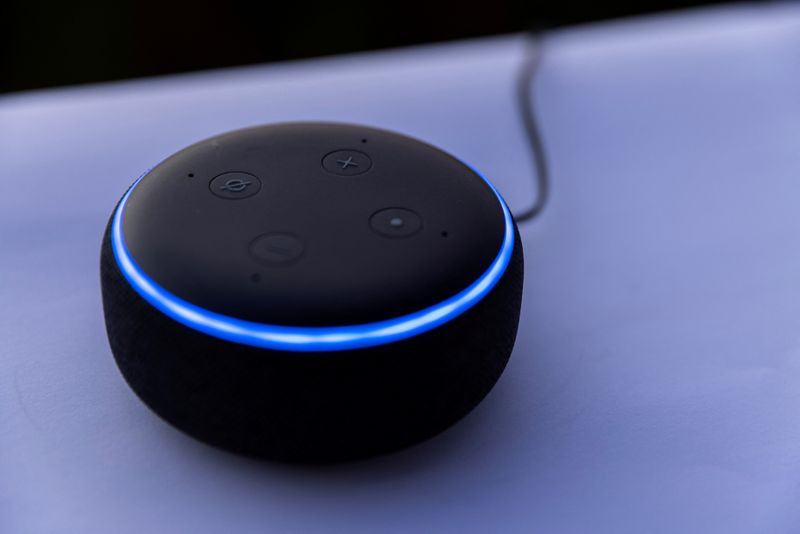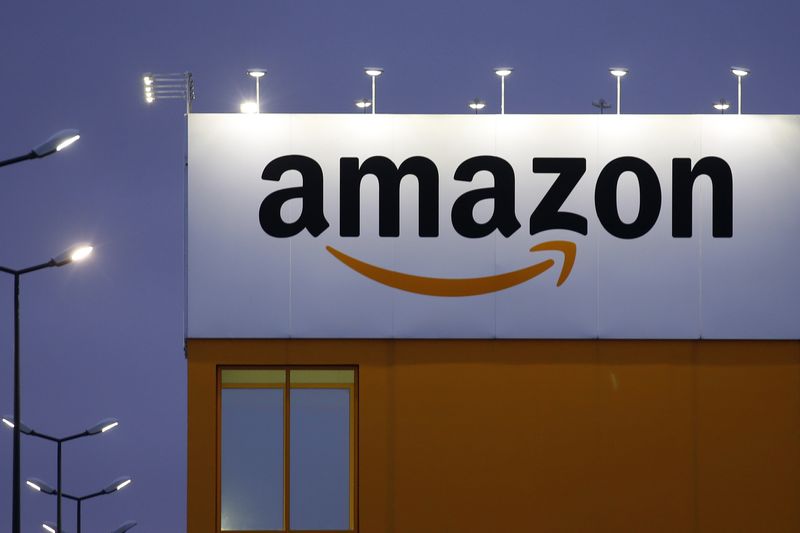By Greg Bensinger
SAN FRANCISCO (Reuters) - Some workers within Amazon’s once-storied hardware division – responsible for popular devices like the Kindle reader and Echo voice-assistant – say morale within the division has suffered amid staff cutbacks and a pipeline of devices in development that they fear are unlikely to prove hits.
The division, known as Lab126, was a focus for Amazon’s founder Jeff Bezos, who portrayed it as an engine for future projects, but more recently it has been buffeted by mass layoffs and key executive departures, including leader Dave Limp, a 13-year veteran who has announced plans to step down later this year.
Reuters interviewed more than 15 current and former employees, who spoke on the condition of anonymity due to their employment terms, who described a hodgepodge of new devices in development, many of them aimed at encouraging customers to use the once ground-breaking Alexa voice service that now faces a stiff challenge in the age of generative AI and ChatGPT.
The company – the world’s biggest online retailer - is holding a devices and services launch event on September 20 where it is expected to feature refreshed versions of some existing products like the Fire tablet, Fire TV stick and Kindle Scribe e-reader, among other announcements. Reuters was unable to determine Amazon’s full plans for the announcement.
The news agency was able to identify five different new devices under development. These include a carbon monoxide detector and a household energy consumption monitor - both with Alexa built into them – as well as a home projector to make any surface a screen. Some of the sources mentioned other projects, the full details of which could not be confirmed.
Amazon hopes consumers will install Alexa-enabled devices in more rooms of their homes and become accustomed to using the system throughout the day, the sources said.
The company has also worked on an Alexa-enabled digital measuring device (for instance, for mapping out the dimensions of one’s home) and a virus-testing device initially intended to detect Covid, the people said.
Amazon is secretive about its internal projects at Lab126, which has long been crucial to its drive to position itself as a tech innovator. Not all of them will be produced commercially, sometimes due to financial or market concerns, the sources said, while some have already been reworked or canceled altogether.
Though relatively small within Amazon’s sprawling empire, the device unit has been symbolically important as a gadget testing ground and Alexa’s public face through voice-assistant devices. Amazon has said its devices and services business is not profitable, without providing figures.
A spokesperson for Amazon declined to comment on products in development.
“To suggest that a few anecdotes paint a picture of reality for an organization as large and diverse as Devices and Services is inaccurate,” spokeswoman Kinley Pearsall said in written response to questions about morale and devices at Lab126. The “business has been a staple of innovation for over a decade and has created a series of products that are meaningful parts of people’s everyday lives.”
The sources said the lab’s years of losses and shifting strategies have contributed to lowered morale. Many pointed to the Astro home monitoring robot launched in 2021 that, at $1,600, remains niche and was criticized for giving some consumers the creeps.
That followed a series of poorly selling devices, such as a voice-assistant-powered clock, the Fire smartphone and a camera that doubles as a personal stylist, the sources said.
Amazon, the people said, is trying to address flagging interest in its Alexa voice assistant nearly a decade after it was launched and as it faces competition from AI chatbots from Alphabet’s (NASDAQ:GOOGL) Google and a host of startups, including Microsoft-backed OpenAI. ChatGPT and other similar tools have dazzled consumers and investors since late last year with their ability to construct longform and coherent text answers to complex prompts, a format that is difficult to translate to a voice assistant.
Amazon said it is developing a generative AI of its own to bolster Alexa but hasn’t revealed much beyond an August assertion that “every one of our teams is working on building generative AI applications.”
Typically accessed through devices such as Amazon televisions and Echo speakers, Alexa provides spoken answers to questions and can be used for purchases from Amazon’s online store. The company has also worked to make Alexa a home automation hub to allow light bulbs and appliances to be voice controlled.
But Amazon has failed to find a consistent means for profiting from Alexa.
“Amazon’s ability to infiltrate consumers’ lives is limited because they don’t have control of the smartphone,” said Avi Greengart, president of analysis firm Techsponential. “Voice-first is not a great shopping experience,” he said.
EXODUS
Limp, who has overseen device strategy including Ring video doorbells, plans to exit before year's end. Amazon is set to name as successor Microsoft (NASDAQ:MSFT)'s Panos Panay who oversaw development of the Surface, according to Bloomberg. Microsoft declined to comment and Amazon did not respond to a request for comment.
Limp follows longtime executives Lab126 president Gregg Zehr and Alexa senior vice president Tom Taylor who both retired late last year. Ken Washington, who oversaw Astro, left after less than two years to join Medtronic (NYSE:MDT) in May.
CEO Andy Jassy has been reducing Amazon’s headcount after roughly doubling it during the pandemic in response to surging online sales. The retrenchment also affected Amazon’s retail unit, cloud computing, grocery and advertising divisions.
Alexa employees were included in rounds of layoffs beginning last year resulting in 27,000 job cuts across Amazon. Despite broadly popularizing voice assistants, Alexa, with 71.6 million users in 2022, trailed Google and Apple’s Siri, which had 81.5 million and 77.6 million, respectively, according to analysis firm Insider Intelligence.
For years, Amazon has said it can sell devices for close to production cost and see a profit through services offered on them. That’s worked well with its Kindle group, as consumers who own an e-reader purchase e-books for years, with Amazon taking a cut of each sale.
Alexa is another matter. Most efforts to make money from it have centered on easing purchasing from Amazon.com (NASDAQ:AMZN). But a dozen people who have worked on Alexa say they haven’t seen strong evidence customers are buying things they wouldn’t otherwise.
The challenge is users like Bruno Borges, 40, of Vancouver, Canada, who said he found he used his Echo only for its timer, music and weather updates.
“I would never shop on it because I cannot compare things like on the website, so I wonder if I‘m getting the best deal,” he said. He recently stowed his three-year-old device in a drawer and has no plans to continue using it.
Employees say leadership has in recent years shifted towards a drive to produce devices for cheaper to potentially make money on the sale of hardware itself.

That focus on price has caused delays for an advanced projector Amazon is developing to cast images around a room, turning regular surfaces into screens, according to five people familiar with the matter.
With the projector, a user could beam recipes on the wall above their stove or make Zoom (NASDAQ:ZM) calls that track them as they move. Amazon bought a startup called Lightform to help propel the project but has been bent on lowering the projector’s cost, previously offered by Lightform starting at $700, by hundreds of dollars before it could be sold.
